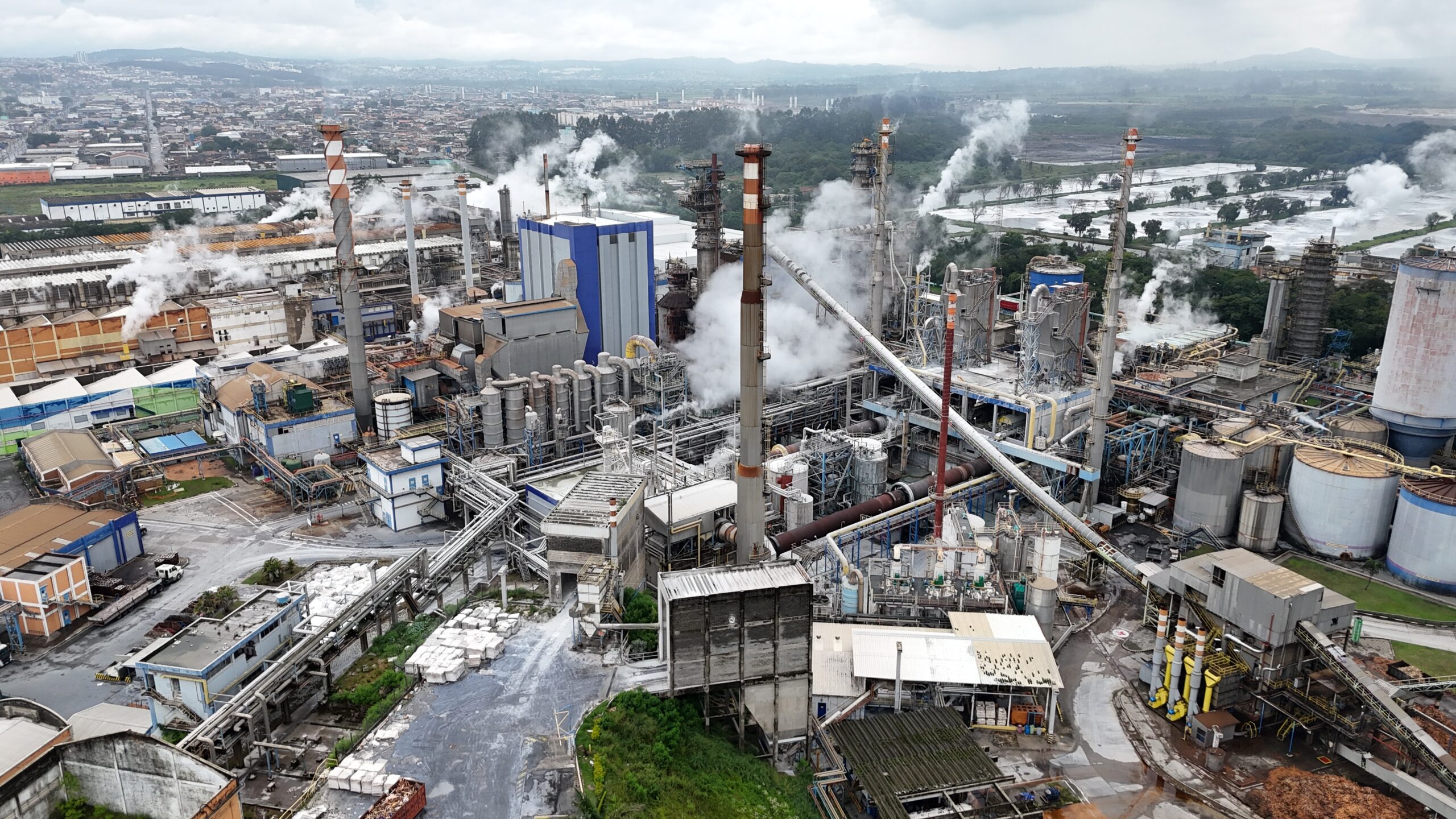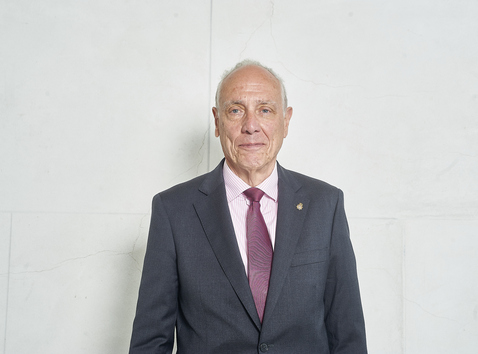Energy
Carlos Alejandre: How to Build a Viable Fusion Energy Industry

From Lab to Market: Key Insights on Scaling Fusion Energy, According to Carlos Alejandre at the Future Trends Forum
This article has been translated using artificial intelligence
Fusion energy is no longer a distant promise—it has emerged as one of the most ambitious strategic vectors of the 21st century. To explore, debate, and accelerate the future of this transformative technology, the Bankinter Innovation Foundation convened more than twenty global leaders in Madrid, bringing together scientists, entrepreneurs, investors, regulators, and policymakers.
The outcome is an unprecedented report: “Fusion Energy: A Revolution in Progress”. It outlines five critical pillars for scaling fusion as a climate, economic, and technological driver. This collective, action-oriented document reflects the rigorous insights of experts from over a dozen countries.
With this new series of articles, we aim to make this knowledge accessible to a broader audience. Over twenty installments will distill the key insights from the thought leaders who took part in the Future Trends Forum—global experts who are shaping the pulse of the emerging fusion energy industry.
We begin with Carlos Alejandre, former Director General of CIEMAT and current Chairman of the Governing Board of Fusion for Energy (F4E), the European agency responsible for managing Europe’s contribution to the ITER project and advancing the industrial development of fusion energy.
In his remarks, Alejandre provides a clear and compelling overview of the major challenges facing fusion energy and the roadmap needed for Europe to lead its industrial deployment. From the transition of science-driven projects like ITER toward demonstration power plants (DEMO), to the imperative for sustained investment, open innovation, and international cooperation, his message is unequivocal: the time to act is now. Because the revolution is already underway.
Are we ready to lead an energy transition that will define our technological sovereignty and shape our future as a continent?
If you’d like to watch Carlos Alejandre’s full talk, you can do so in this video:
Carlos Alejaldre: “Fusion energy and the global energy challenge” #FusionForward
Toward a Viable Fusion Industry: Challenges and Roadmap
Carlos Alejandre delivers a clear and urgent message at the outset of his remarks at the Future Trends Forum: fusion energy is no longer a theoretical promise—it is now an urgent industrial objective. The challenge is no longer just to push the boundaries of plasma physics or break scientific records. The challenge now is different: to build a real, scalable, and competitive industry. And to do so in time for fusion to play a meaningful role in this century’s energy system.
The transition toward a fusion-based industry requires more than advanced engineering. It demands a rethinking of the entire energy innovation cycle—from basic research and pilot plant design, to large-scale component manufacturing, the development of new supply chains, reactor regulation, and the creation of markets that can absorb and finance this new form of generation. Alejandre is unequivocal:
“Fusion will not connect to the grid unless we are able to create the industrial framework to support it.”
In his address, he argues that this process can no longer remain linear or disconnected. Science, industry, investment, and regulation must move forward in parallel—aligned around a shared, long-term vision. Whereas previous decades were focused on proving that fusion was scientifically feasible, today’s priority is to prove it is industrially viable.
In this context, Alejandre outlines a clear roadmap: accelerate the development of key enabling technologies, build demonstration plants (DEMO), establish common regulatory standards, and unlock both public and private capital to bridge the gap between laboratories and the energy infrastructure of the future. Without such an industrial roadmap, he warns, Europe risks falling behind while other regions—such as China or the United States—capture the strategic value of fusion.
Alejandre does not downplay the challenges. He speaks candidly about long timelines, massive investments, and significant technological risks. But he also points to unique opportunities:
“We’re talking about a clean, virtually limitless source of energy with immense transformative potential. The challenge is worth the effort,” he concludes.
This new approach marks a turning point: the moment to move from visionary storytelling to coordinated action. For Alejandre, the fusion industry will not build itself. It must be designed, financed, regulated, and scaled—and the time to start is now.
From ITER to DEMO: The Transition from Science to Industry
Within the fusion energy ecosystem, ITER represents a scientific milestone on a global scale. Conceived as the largest collaborative experiment in the history of energy, this reactor—currently under construction in Cadarache, France—aims to demonstrate what was deemed impossible for decades: that it is possible to generate more energy from fusion than is required to sustain the reaction. Its goal is not to produce electricity, but to validate the physics and technology of fusion at scale. And it is now on the verge of achieving that goal.
However, as Carlos Alejandre emphasizes, the real transformational leap will come with DEMO—the project that will carry ITER’s legacy forward from a scientific to an industrial logic. DEMO will be the first facility capable of producing electricity continuously and feeding it into the grid. In essence, it will be the prototype for a future commercial fusion power plant.
Europe has taken the lead in its design through the EUROfusion consortium, whose Programme Director is Gianfranco Federici—an expert who also participated in our Forum and whose perspective will be featured in the next article in this series.
This shift—from a scientific experiment to a full-scale demonstration power plant—marks the true inflection point for the fusion sector. While ITER seeks to answer the question “Is it possible?”, DEMO must address a far more complex set of questions: “Is it viable, reliable, and scalable?” This requires solving challenges of a completely different nature—industrial, regulatory, and operational.
Carlos Alejandre outlines some of the concrete hurdles that will shape this transition. One example is the generation and handling of tritium, an essential isotope for fusion that does not exist naturally and must be produced within the reactor itself. Another is the development of materials capable of withstanding the intense neutron radiation produced by the fusion reaction—materials that must retain structural integrity through years of continuous operation. There is also the control of plasma at temperatures exceeding 100 million degrees Celsius—hotter than the core of the Sun.
In addition, the entire energy conversion model must be reimagined: How do we turn plasma heat into usable electricity? How do fusion reactors integrate into national power grids? What role should artificial intelligence play in the autonomous operation of these highly complex machines?
In this context, DEMO will serve as the validation point for the entire industry—a platform where both technologies and governance models will be tested, along with scale-up strategies and mechanisms for public-private collaboration.
The Great Challenge: Time and Capital
Fusion energy is not a sprint—it is a technological and industrial marathon that demands long-term vision, sustained financing, and an uncommon level of cross-sector coordination. As Carlos Alejandre makes clear, the main challenge in making fusion a reality is both temporal and financial.
On the one hand, there is time. Developing, testing, and scaling the components required for a commercial fusion plant takes decades. And while recent breakthroughs—such as the fusion energy record achieved at JET or ignition at the U.S. National Ignition Facility (NIF)—are impressive, turning those milestones into deployable, scalable technologies is an entirely different game.
Climate urgency adds further pressure. The world needs clean energy alternatives now—not in 2080. Yet Alejandre is realistic: fusion will not replace fossil fuels within the next 10 to 15 years. Its window of impact will only begin to open around 2040. And therein lies the paradox: we must invest today in a technology whose returns will not be fully visible for several decades.
On the other hand, there is capital. Fusion requires investment on a scale few sectors can bear without clear guarantees. The numbers speak for themselves: ITER alone exceeds €20 billion. DEMO will likely require a similar amount. And beyond these flagship projects, there is a vast ecosystem to fund—research centers, startups, supply chains, technical talent development, regulatory certification, and more.
This calls for a new model of shared financing, one that combines institutional leadership with private sector traction. A model closer to those used to develop vaccines or explore Mars than to those currently driving the energy transition.
Alejandre is clear:
“The market alone will not build fusion reactors. But without the market, fusion will never become an industry.”
The key lies in striking that balance: the public sector absorbing the initial technological risk, and the private sector unlocking the innovation, efficiency, and scalability needed to move forward.
To make this happen, Europe must rethink its financial instruments. Alejandre suggests adapting tools like the Innovation Fund or strategic investment programs to the specific case of fusion, and building mechanisms similar to those once deployed for renewables. He also calls for breaking down institutional silos and establishing governance structures that can accelerate decision-making.
Ultimately, the success of fusion will depend on our collective ability to plan 20 years ahead in a world that rarely looks past the next fiscal quarter.
Europe’s Role: Technological Leadership or Strategic Dependence?
Carlos Alejandre does not shy away from one of the most uncomfortable questions in the fusion debate: Is Europe truly prepared to lead this new industry—or is it at risk of becoming a secondary player as others move faster?
His answer is clear: the continent possesses the scientific knowledge, research infrastructure, and talent. What is often lacking, he argues, is strategic ambition.
While Europe continues to advance through public initiatives such as ITER and the conceptual design of DEMO, other global players are moving with greater agility. The United States has activated a thriving private fusion ecosystem, with over 40 startups securing more than $7 billion in investment. China is making massive investments in its own facilities and training tens of thousands of engineers in critical technologies. And the United Kingdom—now outside the EU—has launched its own commercial reactor initiative, the STEP project, with a market-driven, fast-track model.
In this evolving landscape, the European Union runs the risk of becoming a world-class laboratory while others define the rules of the emerging industrial game. As Alejandre puts it:
“If we don’t lead the industrial development of fusion, we will end up buying the technology from others. Just as we did with solar panels and batteries.”
This is not just a matter of scientific prestige. What is truly at stake is Europe’s energy sovereignty in the coming decades. If fusion becomes a mature technology, it will radically alter the global energy balance. Europe must decide: does it want to be a producer—or a customer?
To avoid future dependency, Alejandre calls for the creation of a comprehensive European industrial strategy for fusion—one that goes beyond R&D programs and translates into real manufacturing capabilities, supply chains, and strategic partnerships with industrial leaders. This includes strengthening the link between Europe’s major scientific centers (such as CEA, CIEMAT, Max Planck or Karlsruhe) and industry, by creating more agile technology transfer mechanisms and fostering greater involvement from high-tech SMEs.
He also stresses the need to accelerate regulatory standardization and design legal frameworks tailored specifically for fusion. Currently, many of the regulations being applied are modeled on conventional nuclear fission, which slows down development and inflates costs unnecessarily.
Finally, Alejandre emphasizes the importance of scientific diplomacy. Europe cannot afford to act in isolation. He advocates for deeper collaboration with strategic partners like Japan, South Korea, and the United States—but from a proactive and coordinated position.
“Fusion is a global challenge. But that doesn’t mean everyone will arrive at the finish line at the same time. Whoever gets there first will set the pace,” he warns.
In a moment of profound realignment in the global energy map, fusion could become the next great geopolitical vector. And if Europe wants to play a meaningful role, it must act with clarity and determination.
Open Innovation and International Collaboration
One of the key messages Carlos Alejandre delivered at the Future Trends Forum is that fusion energy will not be built behind closed doors. The scale of the challenge, the diversity of technologies involved, and the urgency of the climate crisis demand a radical rethinking of how we innovate: faster, more connected, and more open.
Alejandre strongly advocates for open innovation, capable of integrating knowledge across disciplines and industries. Fusion development is not the sole domain of plasma physicists or nuclear engineers—it also relies on breakthroughs in artificial intelligence, robotics, advanced materials, cooling systems, power electronics, and real-time data management. It is a systemic challenge that requires collective intelligence.
In this sense, he calls for dismantling silos between sectors and activating technology transfer channels with industries such as aerospace, automotive, telecommunications, and even defense. Many of the technologies fusion needs already exist—or are under development—in other fields. The key is to adapt them, combine them, and scale them effectively.
Alejandre highlights, for example, the potential of additive manufacturing techniques (metal 3D printing) to produce complex components more quickly and with greater precision. Or the use of AI algorithms for dynamic reactor control, machine learning in fault diagnostics, and advanced plasma behavior simulations.
On the international front, Alejandre underscores that ITER itself is a remarkable example of global collaboration: a project shared by 35 countries, with components manufactured in dozens of facilities around the world and assembled like a giant scientific Meccano in southern France. That experience should serve as a model for future initiatives such as DEMO and the first commercial reactors.
Finally, he warns against the risk of “national silo syndrome”—the idea that each country or region can independently build its own fusion program. This approach would waste enormous amounts of time, money, and talent. Instead, the key lies in sharing data, experiments, failures, and lessons learned.
As he puts it:
“Fusion will not be viable unless we make it global from the start.”
Conclusion: Designing Tomorrow’s Energy System Today
Carlos Alejandre’s intervention at the Future Trends Forum is a call for concrete action. Europe stands at a crossroads: it can choose to lead the development of a strategic, high-impact industry—or resign itself to importing technology and depending on others.
Fusion energy is not just a scientific challenge—it is an industrial, economic, and political one. It demands long-term investment, bold decision-making, and a shared vision across institutions, companies, and research centers. Alejandre leaves no doubt: the time for speeches is over. Now is the time to design, build, and deploy.
If fusion can overcome its technical barriers, it will become one of the most powerful tools to deliver a global energy system that is zero-emission, secure, and continuous. But that future will not happen by default. It must be built—and it must begin now.
This article is part of the broader analysis developed within the Future Trends Forum. The full report, “Fusion Forward: A Roadmap Toward a Strategic Industry”, brings together insights from over twenty international experts and defines five critical pillars for scaling fusion energy as a driver of climate action, economic competitiveness, and technological leadership.
Download it here and discover in detail how we can start designing tomorrow’s energy system—today.







